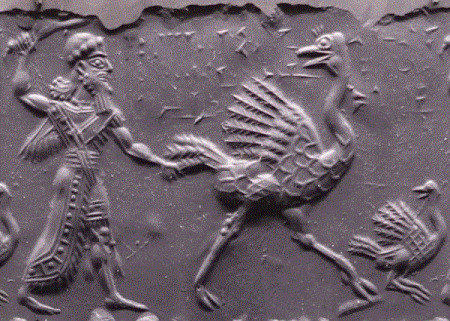You are seeing an unstyled version of this site. If this is because you are using an older web browser, we recommend that you upgrade to a modern, standards-compliant browser such as FireFox [http://www.getfirefox.com/], which is available free of charge for Windows, Mac and Linux.
Archival Texts of the Middle Assyrian Period

Middle Assyrian cylinder seal. Image by Daderot@wikimedia, listed as open domain
The Middle Assyrian empire (ca. 1500‒1000 BCE) saw the expansion of the small state centred around the city of Assur (modern Qal'at Sherqat) towards the West. During the reign of Shalmaneser I (1273‒1244/1263‒1234 BCE), the rival state of Hanigalbat was defeated and new Assyrian colonies were founded at former settlements in the Habur region. Local administration from these places yielded, together with texts from the city of Aššur, a large number of over 3,000 cuneiform tablets.The Middle Assyrian period formally ends with the long reign of Tiglath-Pileser II (967–935 BCE), after which the Neo-Assyrian period started with a revival of Assyrian power under the leadership of Aššur-dān II (934–912 BCE). However, only a few texts can be dated to the period from the second half of the reign of Tiglath-Pileser I (1074–1056 BCE) onwards. The project Archival Texts of the Middle Assyrian Period, formerly Text Corpus of Middle Assyrian (TCMA), seeks to provide online transliterations, translations, and bibliographical references to Middle Assyrian administrative documents. The goal is to eventually provide editions of all administrative documents and Assyrian scholarly compositions.
ATMAP is build in cooperation with the München initiative Archival Texts of the Middle East in Antiquity (ATMEA), which is a branch of The Munich Open-access Cuneiform Corpus Initiative (MOCCI). The project was founded in early 2020 and is developed by PD Dr. Jacob Jan de Ridder. ATMAP is currently coordinated at the Eberhard Karl University of Tübingen (Germany) by PD Dr. Elyze Zomer. For further queries, please contact elyze.zomer@uni-tuebingen.de.
To use ATMAP effectively use "Browse the corpus" to find all texts available in one place, ordered after their main text publication. You can also easily find tablets by using their Oracc P number or museum number. Text are ordered under their first main text publication. Therefore VAT 8956 would be found as KAJ 316, even though it was re-published with improved copy as MARV 1 22. If only published as an article, the museum number is used. The large inventory published by Köcher in AfO 18, is included here as VAT 16462. An exception are the texts re-listed in KAM 7, e.g., the letter A 02429 is included as KAM 7, 145. Tablets of private collections are named after the author of their editions, e.g., Wilhelm 1997: AOAT 247. This letter is is found in the folder "Private collection", together with Faist 2001: AOAT 265. For convenience, large numbers of texts published in journals are still listed under the volume of this folder. Thus Tell Rimah texts are found in Iraq 30, listed after their siglum TR. In addition, texts from Tell Billa (JCS 7) and Tell Ali (Iraq 70) use a siglum named after their findspot (Billa and Ali). To find texts from one specific place, go the findspots where they are listed in their respective subproject. The indices of the general glossary and proper nouns can be accessed below in the menu "glossaries," however each subproject has its own set. Go to the plus symbol on the left side of each subproject to find them. This makes it easy to compare between the vocabulary and onomasticon of each site. As such, all proper nouns and nouns are standardized to (idealized) Standard Babylonian. This means that Urad-Šerūa is found in the onomasticon under (W) as Warad-Šerūa. Clicking on this name will give a list of attestation with different spellings and their Middle Assyrian realization (Urad-Šerūa) automatically rendered. Note that following general Oracc conventions, statives are listed as adjectives. However, statives that use a direct object are given with secondary meaning as being verbal. A good example of this is našû "lifted," which can be found with secondary meaning "bring (V)." Adjectives of secondary stems are listed separately (but finite verbs unfortunately not), e.g., šūšubu "settled."


